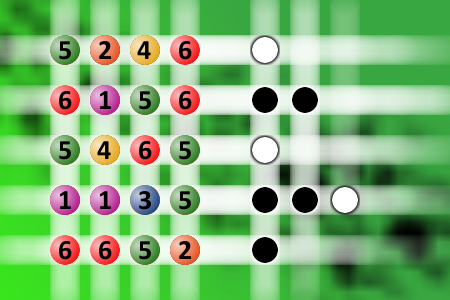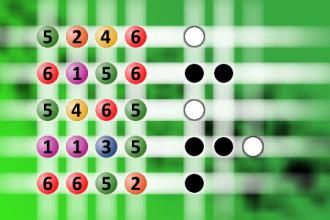Which is a winning combination of digits?
The computer chose a secret code (sequence of 4 digits from 1 to 6). Your goal is to find that code. Black circles indicate the number of hits on the right spot. White circles indicate the number of hits on the wrong spot.Correct answers: 2
#brainteasers #mastermind

A couple go for a meal at a Ch...
A couple go for a meal at a Chinese restaurant and order Chicken Surprise. The waiter brings the meal, served in a lidded cast iron pot. Just as the wife is about to serve herself, the lid of the pot rises slightly and she briefly sees two beady little eyes looking around before the lid slams back down.
"Good grief, did you see that?" she asks her husband.
He hasn't, so she asks him to look in the pot. He reaches for it and again the lid rises, and he sees two little eyes looking around before it slams down.
Rather perturbed, he calls the waiter over, explains what is happening, and demands an explanation.
"Please sir," says the waiter, "what you order?"
The husband replies, "Chicken Surprise."
"Ahh so sorry," says the waiter, "I bring you Peeking Duck."
"Good grief, did you see that?" she asks her husband.
He hasn't, so she asks him to look in the pot. He reaches for it and again the lid rises, and he sees two little eyes looking around before it slams down.
Rather perturbed, he calls the waiter over, explains what is happening, and demands an explanation.
"Please sir," says the waiter, "what you order?"
The husband replies, "Chicken Surprise."
"Ahh so sorry," says the waiter, "I bring you Peeking Duck."

